Volume 10, Issue 3
Displaying 1-10 of 10 articles from this issue
- |<
- <
- 1
- >
- >|
-
1971Volume 10Issue 3 Pages 1-8
Published: October 25, 1971
Released on J-STAGE: March 19, 2010
Download PDF (17378K) -
1971Volume 10Issue 3 Pages 9-17
Published: October 25, 1971
Released on J-STAGE: March 19, 2010
Download PDF (2690K) -
1971Volume 10Issue 3 Pages 18-21
Published: October 25, 1971
Released on J-STAGE: March 19, 2010
Download PDF (262K) -
1971Volume 10Issue 3 Pages 22-31
Published: October 25, 1971
Released on J-STAGE: March 19, 2010
Download PDF (3003K) -
1971Volume 10Issue 3 Pages 31
Published: October 25, 1971
Released on J-STAGE: March 19, 2010
Download PDF (1585K) -
1971Volume 10Issue 3 Pages 32-47
Published: October 25, 1971
Released on J-STAGE: March 19, 2010
Download PDF (6957K) -
1971Volume 10Issue 3 Pages 48-54
Published: October 25, 1971
Released on J-STAGE: March 19, 2010
Download PDF (9243K) -
1971Volume 10Issue 3 Pages 55-59
Published: October 25, 1971
Released on J-STAGE: March 19, 2010
Download PDF (3062K) -
1971Volume 10Issue 3 Pages 60
Published: October 25, 1971
Released on J-STAGE: March 19, 2010
Download PDF (142K) -
1971Volume 10Issue 3 Pages 61-62
Published: October 25, 1971
Released on J-STAGE: March 19, 2010
Download PDF (428K)
- |<
- <
- 1
- >
- >|
